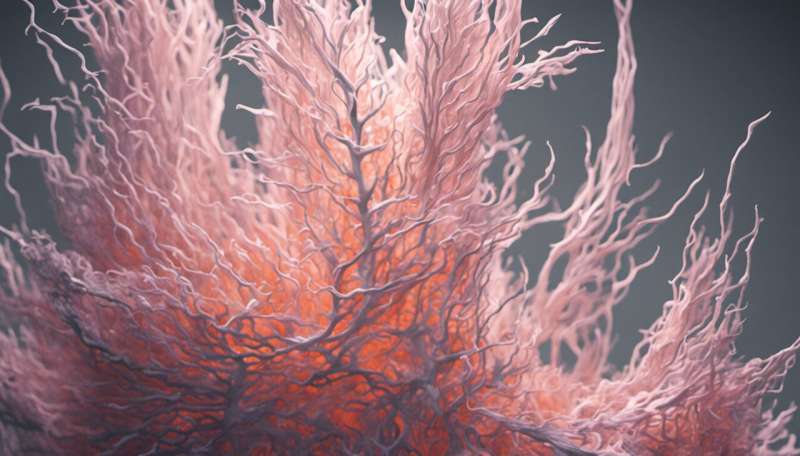How an experimental 3D-printed artwork could help save modern art

Many contemporary artworks are endangered due to their extremely fast degradation processes. NANORESTART—a project developing nanomaterials to protect and restore this cultural heritage—has created a 3-D printed artwork with a view to testing restoration methods.
The 3-D printed sculpture was designed by engineer—artist Tom Lomax—a UK-based sculptor and painter specialised in 3-D-printed colour sculpture. Drawing inspiration from the aesthetic of early 20th century artworks, the sculpture was made using state-of-the-art 3-D printing processes and can be downloaded for free.
'As an artist I previously had little idea of the conservation threat facing contemporary art – preferring to leave these issues for conservators and focus on the creative process. But while working on this project with UCL I began to realise that artists themselves have a crucial role to play,' Lomax explains.
The structure has been printed using the most common rapid prototyping (RP) technologies, which are gaining popularity among designers and artists. It will be a key tool for the project team to test how these structures degrade and come up with solutions to better preserve them.
As Caroline Coon, researcher at the UCL Institute for Sustainable Heritage, notes, 'Art is being transformed by fast-changing new technologies and it is therefore vital to preempt conservation issues, rather than react to them, if we are to preserve our best contemporary works for future generations. This research project will benefit both artists and academics alike – but ultimately it is in the best interests of the public that art and science combine to preserve works.'
The NANORESTART team subjected the artwork to accelerated testing, discovering that many 3-D-printing technologies use materials that degrade particularly rapidly. It is particularly true for polymers, whose only-recently achieved cultural heritage status also means that conservation experience is almost inexistent.
Preserving or not: an intricate question for artists
The experiments were part of a UCL paper entitled 'Preserving Rapid Prototypes: A Review', published in late November in Heritage Science. In this review, Caroline Coon and her team have critically assessed the most commonly used technologies used to tackle the degradation of materials, noting that 'to conserve RP artworks it is necessary to have an understanding of the process of creation, the different technologies involved, the materials used as well as their chemical and mechanical properties.'
Besides technical concerns, the paper also voices those of artists, in particular the importance of the original artefact and the debate around the appropriateness of preventing the degradation process of artworks. Whilst digital conservation of these artworks would prevent degradation and allow designs to be printed on-demand, some artists argue that the original artefact is actually the one with artistic value as it references a specific time and place. On the other hand, some artists actually embrace and accept the natural degradation of their art as part of its charm.
With two more years to go before its completion, NANORESTART will undoubtedly bring valuable results, resources and reflexions to both conservators and artists. The nanomaterials it aims to develop will bring the EU at the forefront of a conservation market estimated at some EUR 5 billion per year.
Journal information: Science
Provided by CORDIS





















